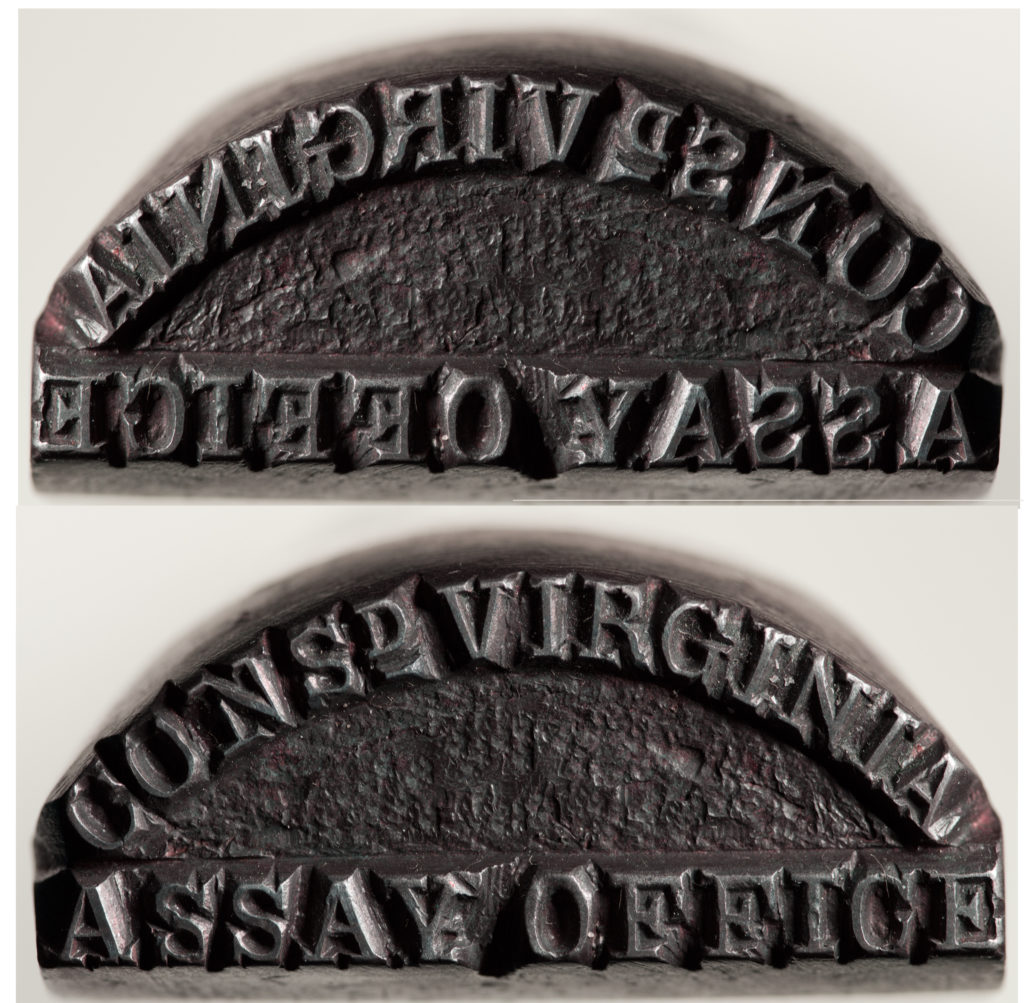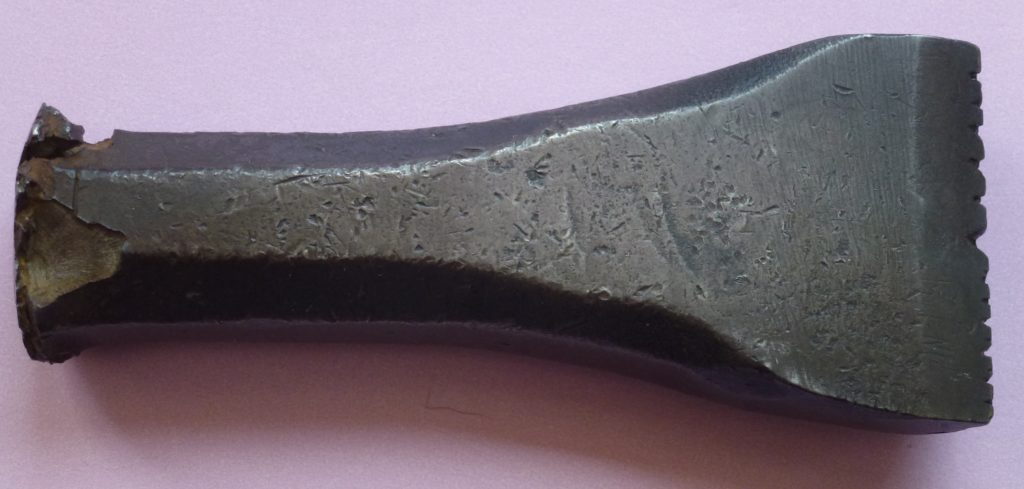The history of the Consolidated Virginia Mining Company is one of sudden success followed equally suddenly by ruination for most of its shareholders. The firm was founded on January 11, 1872 by James G. Fair, John W. Mackey, William S. O’Brien, and James C. Flood, four venture capitalists and speculators who had been eyeing an unproductive section of ground lying between the Ophir and Gould & Curry Mines in Virginia City. The four believed, with considerable justification, that the land hid riches in bullion because its two neighboring mines were very productive. Immediately on forming the new company, a shaft was sunk on the new property and a tunnel was driven from Gould and Curry’s property into the newly acquired acreage. At first, digging was through barren rock, but soon a thin seam of ore was discovered. Miners under Mr. Fair’s direction followed the seam, which never seemed to open into anything large and promising. Meanwhile, costs were mounting, and by the summer of 1873 more than $400,000 had been spent on the venture. The company’s coffers were bare, and the four principal stockholders had no further funds to sink into the mine. At this juncture, following a short illness which kept him from the diggings. Fair broke through into a vein of ore seven feet wide. One month later, the vein had widened to 12 feet and 25 tons of silver bullion ore were being removed daily.
By the end of the year, the “Big Bonanza Lode” had been located and ore valued at $632 per ton was being taken out daily. No matter how deep the miners dug the lode just seemed to keep getting richer all the time. At its height, more than 1000 tons of ore was extracted from the Consolidated Virginia on a good day. In the summer of 1875 United States Mint Director Henry R. Linderman estimated that the company could expect to extract $300,000,000 by the time the lode finally ran out. News like this sent the value of the company’s shares rocketing, from $115 in November, 1874 to $700 in January, 1875. Unfortunately, at the latter level the company was vastly overvalued and, when cooler heads began noting the discrepancies, the bubble burst. Shares in the Consolidated Virginia Mining Company fell from their high of $700 to just below $500, while shares in other mines located near ore also on the “Big Bonanza” fell even more sharply. Fortunes that had seemed so secure on paper in November were, by the spring of the following year, nothing but a memory. The company went on to continue extracting silver, and the fortunes of the four speculators were made, but the Panic of 1875 really tarnished the luster that had, until then, lain so lightly upon the history of Virginia City, Nevada,
2.65 oz Consolidated Mine Virginia – Virginia City,NV – Storey County – Con-Virginia
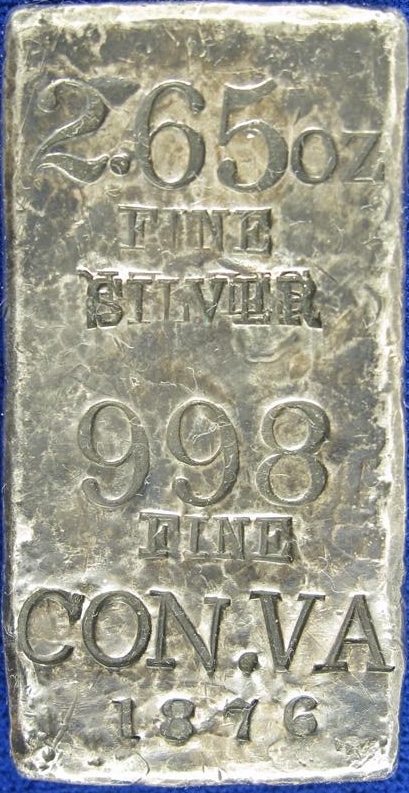
This ingot reads: “2.65 oz / Fine / Silver / 998 / Fine / CON.VA / 1876. The word “silver” was originally stamped upside down, and corrected with an overstamping of “silver”. Measures: 2″ x 1″ x .25″. There are cooling depressions on the reverse, with one medium central cooling fissure.
In 1870 the Consolidated Virginia Mining Company was formed from a number of small mines on the Comstock Lode near Virginia City, Nevada by John W. Mackay, James G. Fair and William S. O’Brien. The near-by California Mine was added later and Con-Va uncovered enough large ore bodies to be considered one of the largest silver producers on the Comstock Load. This ingot may have been produced for the Consolidated Virginia Mine exhibit at the Centennial Exposition in Philadelphia in 1876, but that is speculation. Very Rare.
The Con Virginia Mine Bars
The Consolidated Virginia Mine was one of the top two producing mines on the Comstock, and by the time it’s neighbor and chief competitor, the California Mine merged with the company, it was the most important mine in Nevada’s history. Together, the two mines produced over $125 million in gold and silver.
The Consolidated Virginia was originally the White & Murphy, the Sides Brothers claims, Central Company, and Kinney ground. Mackay, Fair, Flood & Obrien bought up the ground and began massive exploration on the main ore body. They struck pay dirt in October, 1873 when the “Big Bonanza” was found, first on the 1167 foot level. Dan DeQuille (History of the Comstock Silver Lodes and Mines, 1889) said “The space between the two walls was filled with what is locally called “vein material” (gangue), and in this was found the ore body or “bonanza” which was in one place over 300 feet in width. This mass of ore yielded from $100 to $700 per ton, but in places were found masses of pure native silver and spots of ore so rich in black sulphuret and gold that to make assays of it was much like making assays of pure metals.” $112 million was produced from 1873-1882 alone.
The mine was the subject of very serious stock jobbing, as Mackay withheld information about the discovery until after he and his partners had complete control of the stock. This happened several times over the first four years of production of the Bonanza.
The Con-Virginia Mining Company regularly gave away silver bars for charity. The Virginia City Territorial Enterprise often reported upon the generosity of the Con-Virginia giving away small or large bars, especially when it came to education or children. Unfortunately, only one small gold bar is known today, secreted away in a private collection. It is a “prize” bar, awarded to a student for some accomplishment. Though I have not seen the bar in thirty years, it is still believed to be in a Comstocker’s family.
This unique silver bar carries the date 1876, and has a punch unlike the post-1900 silver bars previously seen in numismatic sales. Each of these two style bars carry differing punches, but both are known in identical original form in the Mackay School of Mines (now Keck) Museum Collection, the repository of most of the Con-Virginia’s goods, donated by the Kendall family about 1929.
In 1876, several of the Comstock mines participated in the Centennial Exposition in Philadelphia. A small stamp mill was erected, and ore reduced from the Belcher, Ophir, Con-Virginia and other mines. This ingot, and one from the Belcher, are the only two surviving silver ingots from that great exposition.
Nevada began studying the possibilities of participating in the 1876 Centennial Exhibition in 1873, when a select committee recommended that the state participate. Some of the mines of the Comstock Lode had just produced record bonanzas, particularly the Crown Point and Belcher, the two largest mines at the time, which both went on to produce more than $70 million combined. The committee received an appropriation of $20,000 for the exhibit, which was to erect a quartz mill and have mineral specimens from the major mines of the Big Bonanza. The appropriation for the exhibit was so great, that organizers noted that only three states had larger appropriations, Pennsylvania, Massachusetts and New York. Nevada’s exhibit was unique. A complete quartz mill was sent to Philadelphia and reassembled at the exposition. Visitors watched as ores from three Comstock mines were processed, and this ingot is the probable result of one of those runs of ore.
The ore came from the Comstock Mines: the Con-Virginia, the California, the Ophir and the Belcher. It was packed in sacks and sent to Philadelphia by the Pennsylvania Railroad. The rock went into the stamps and came out in the form of powder, which was dissolved in a small stream of water that ran through a trough. The quicksilver was added and the amalgamation process took place. The mill stood in the Machinery Hall…
[10/2010] https://www.icollector.com/Virginia-City-NV-Storey-County-c1875-Con-Virginia-Silver-Ingot_i9800446 ($28,800)
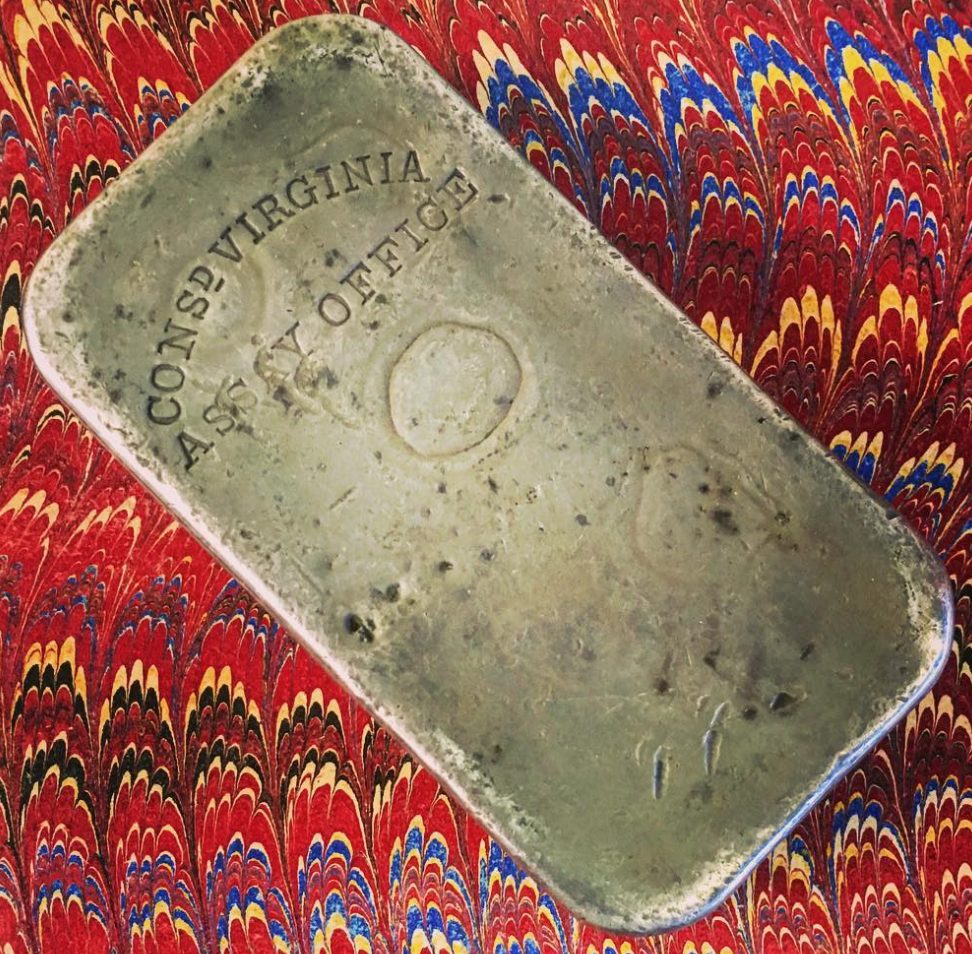
One of the largest and finest known Consolidated Virginia silver bars. The Consolidated Virginia Mining Company contained the ore body known as the “big bonanza” in 1873.
Unverified Ingots
This website calls into question the authenticity of the following two (2) ingots which share a similar style and form. We are not confident they are genuine as-made from the 19th century. Serials: 6783, 2643.
27.23 oz Undated [1872-1880’s] Virginia City, Nevada, Consolidated Virginia Mining Company. No. 6783.
The most important mine on the Comstock. Extremely rare
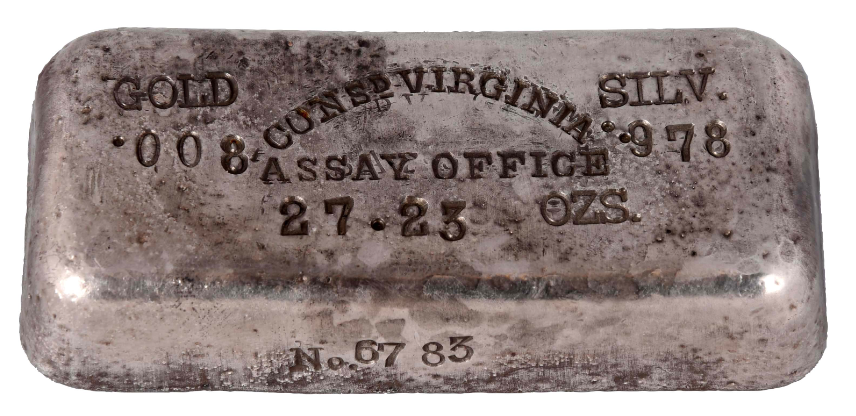
[01/2017] https://auctions.morphyauctions.com/LotDetail.aspx?inventoryid=252705 ($12,600)
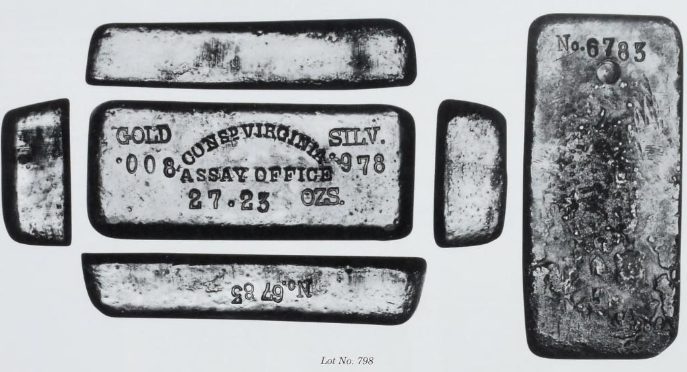
978 Fine silver, .008 Fine gold. 97.5 x 44.8 x 21.4 mm. rectangular in appearance, trapezoidal in cross-section. Essentially, as made save for a modern drill hole on the back. CONSd. VIRGINIA ASSAY OFFICE, GOLD, SILV., No., and OZS. in logotype punches; the deposit number (6783), weight, and finenesses in individual numeral punches. Long edge at top blank, long edge at bottom with a No. 6783. Both short edges blank. Bottom face with No.6783 along right edge. This is a newly found Consolidated Virginia Assay Office bar. It is only the third silver bar made by this “Big Bonanza” firm that we have records of (the other two are No. 2643 ex Clifford:227 and No. 3044 owned by a western collector). Given the richness of this company it is surprising that more of its bars have not survived. According to the consignor, this bar was reassayed on June 17, 1999, at which time its fineness was determined to be .0083 Gold and .9791 Silver.
[01/2000] https://nnp.wustl.edu/library/auctionlots?AucCoId=3&AuctionId=516740
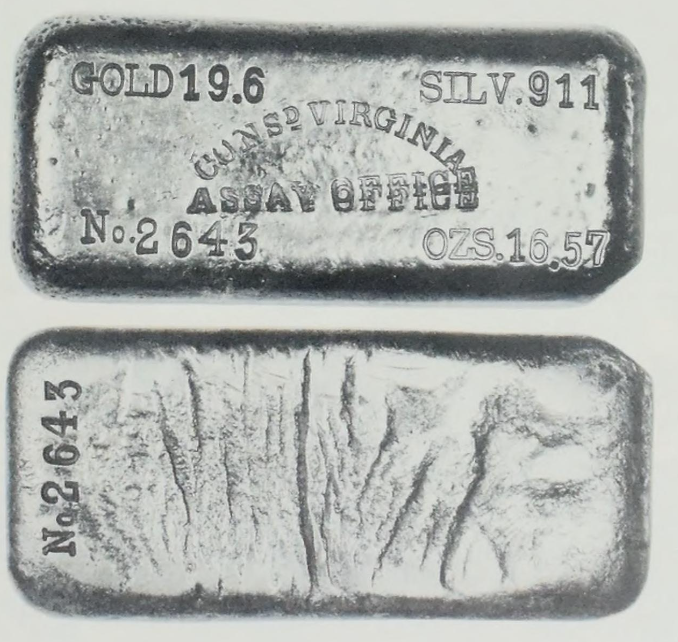
Nevada, Virginia City. Mixed metal transport ingot. CONSD VIRGINIA (curved) / ASSAY OFFICE in two lines in center. At top left GOLD 19.6; at top right, SILV. 911; at bottom left, NO. 2643; and at bottom right, OZS. 16.57. On the reverse, stamped serial NO. 2643. Extremely Fine. Virtually as issued, but with assay test filing in lower right comer of the front. Deep casting fissures and related cooling flaws on the reverse. The amazing resemblance of this silver/gold ingot to that of Gould & Curry is remarkable.
This is one of just three ingots known on the Consolidated Virginia Assay Office.
[03/1982] https://archive.org/details/henryhcliffordco1982bowe/page/n101/
This is a placeholder for a possible sighted gold Con Va bar referenced in the auction catalog for the first Con Va ingot on this page.
“Unfortunately, only one small gold bar is known today, secreted away in a private collection. It is a “prize” bar, awarded to a student for some accomplishment.”
Con Va Assay Office – bullion punch
Not much is known about this particular punch except that it exists in recent past and is owned by a private collector.
